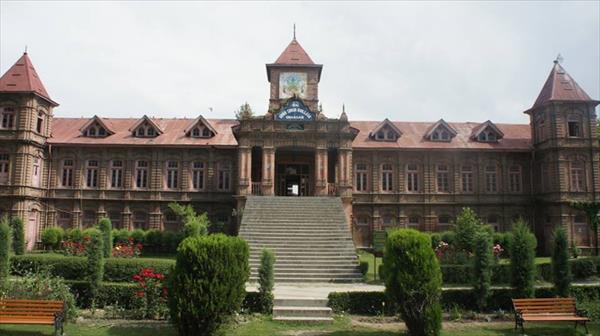SRINAGAR: Amar Singh College Srinagar has bagged a prestigious award of merit in the 2020 United Nations Educational, Scientific and Cultural Organization (UNESCO) Asia-Pacific awards for cultural heritage conservation.

As per the statement issued by Indian National Trust for Art and Cultural Heritage (INTACH) J&K chapter, 48 projects were received collectively to represent a significant achievement in the progress of conservation in the Asia-Pacific region.
“Project entries were diverse in scope and typology and were submitted from nine countries across the Asia-Pacific region. The Jury consisting of nine international conservation experts was convened from 20thto 22nd November 2020 to deliberate the project entries,” said M Saleem Beg, convener and head INTACH, J&K Chapter in statement.
The Amar Singh College is one of the most important institutional buildings in Kashmir and in essence a built heritage asset that invokes pride in much of the academic and intellectual community of Kashmir as many luminaries are alumnus of this institution. The Amar Singh Technical Institute was established in 1913, and FH Andrews, formerly Headmaster of Battersea Polytechnic School, London was appointed as its first Principal. The aim was to promote the local industry, to modernise technical education and to teach the pupils new techniques that could support them in their careers. The college after its initial operational issues went from strength to strength and became a major driver in imparting high-quality education to the Kashmiri society. Amar Singh Technical Institute was progressively upgraded as Amar Singh College in June 1942 with many additional streams added to its curriculum. The highly ornamental building is essentially an exposed brick building, stylistically influenced by the prevailing colonial trend in the region.
A sustainability issue to be addressed was the site’s low-lying circumstance which made it vulnerable to water-logging and moisture ingress. The building was facing surface erosion, material degradation, vegetative growth and cracks in its towers.
“This year the jury awarded two special recognition for sustainable development, one award of Excellence, one award of distinction, three awards of merit, and one award for new Design in Heritage Contexts,” Beg said.
The restoration project was completely led by INTACH Kashmir Chapter with support from the local government and a group of community stakeholders.
The restoration of the Amar Singh College brought back one of the most prominent institutional buildings in Kashmir to its former glory. Undertaken with a high level of technical proficiency, the project reversed major deterioration resulting from years of inappropriate additions, poor maintenance, and catastrophic events such as the unprecedented flooding in 2014. The project team’s meticulous attention to original building design and materials involved training a new generation of building artisans in brick andstone masonry. Competently led by INTACH Kashmir Chapter with supportfrom the local government and a group of community stakeholders, the project serves as a noteworthy model for safeguarding a unique 20th-centuryarchitectural asset in the Victorian neighborhood of the old city of Srinagar.
2020, UNESCO Asia-Pacific Jury Comments
“The project serves as a noteworthy model for safeguarding a unique 20th-century architectural asset in the Victorian neighbourhood of the old city of Srinagar,” he said.
A spokesman of INTACH said that the objective of conserving the building was to restore the former glory of the building and to repair the damages caused by 2014’s floods and 2006’s earthquake.
“The ornamental gauged bricks used in the building are handmade ‘rubber’ bricks and therefore very soft and predisposed to erosion and defacement. One of the challenges was to train the craftsmen to restore these ornamental bricks and to prepare new bricks to fill-in the missing ones in the walls,” he said in a statement.
Apart from the high-quality architecture, the building also boasts of some wall murals in two of its hallways. It appears that these murals, which are influenced by the Ladakhi art, formed a significant part of the building’s interiors but had become obliterated over time. Extant samples of these wall murals can be seen in the adjacent rooms to the foyer in the first floor. Much is not known about the origin and context of the wall murals but it is clear that they are from the same period as the building and created intricately using natural pigments. Currently, INTACH, Kashmir Chapter are restoring these wall murals.
Expressing his gratitude for the recognition, convener and Head INTACH, J&K chapter said that the restoration work was executed by the conservation team of INTACH Kashmir Chapter led by Saima Iqbal, conservation architect assisted by Anjum Rafiq, Imran Bhat, experts from IGNCA for the murals.
The project was successfully implemented with the support and cooperation of the college authorities and the Department of Higher Education, J&K Government.















